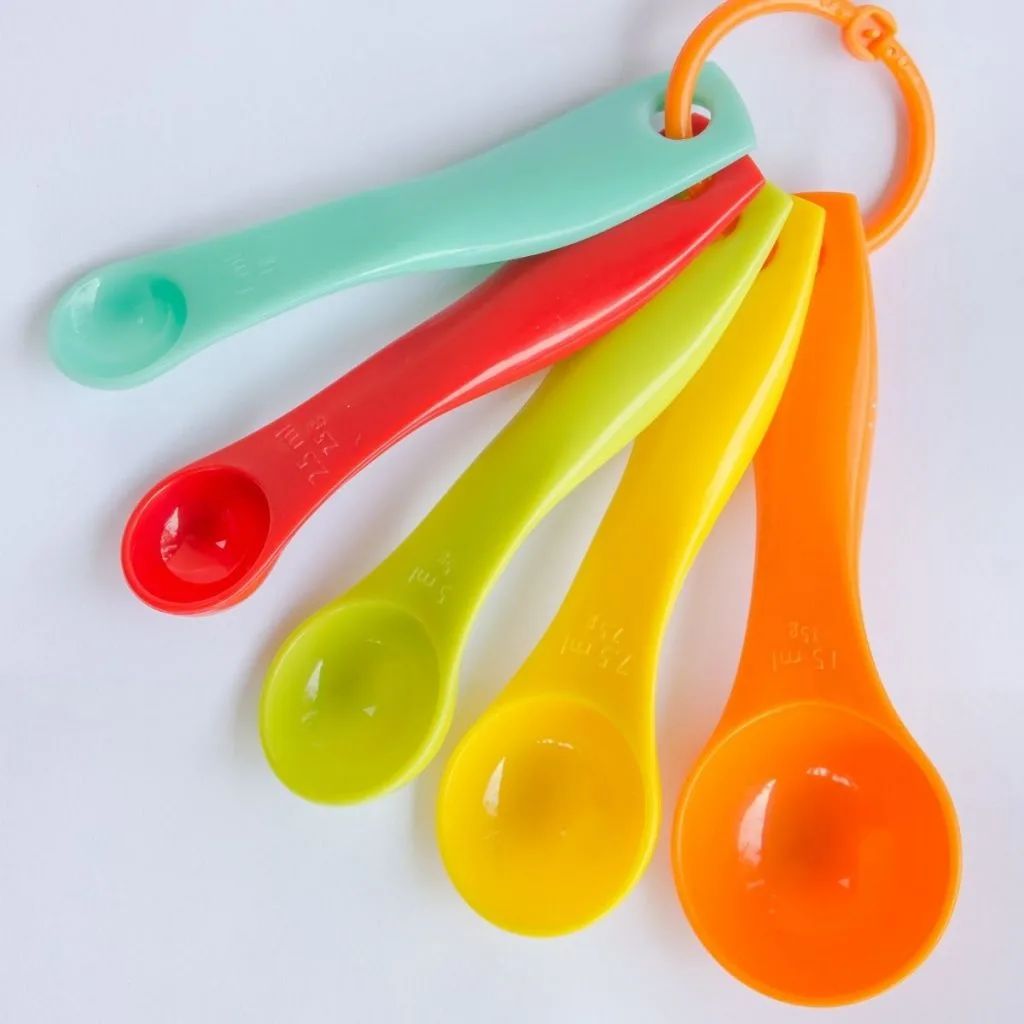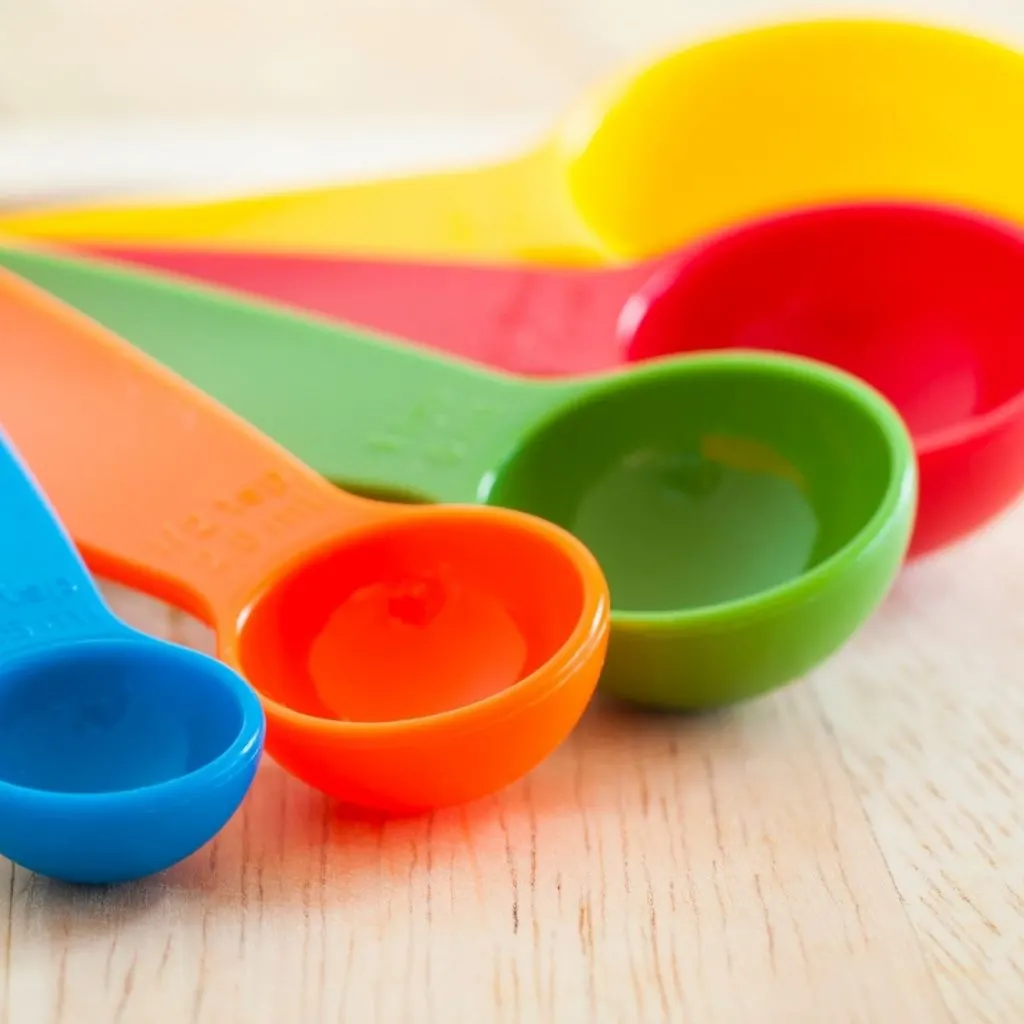Print this cooking measurement conversion chart and keep it on your fridge! This is a handy (and free) printable to keep on hand for all of your kitchen measurement conversions.

Sign up for the free download below!
Cooking should be fun and creative, and you should look forward to it every day. But sometimes, figuring out a recipe feels more like solving a complicated problem in math class.
Different regions use different systems of measurement, or you may simply not be able to find your tablespoon and resort to using a teaspoon instead. Luckily, we’ve created a chart that eliminates the need for guesswork, and will not only help guide you to creating the perfect recipe but will also save you time and energy.
Abbreviations For Measurements
To get started, it’s important to understand the common abbreviations for different types of measurements.
Here are variations of each type of measurement included in the conversion chart:
| Measurement | Abbreviation |
|---|---|
| Teaspoon | t (lower case letter), tsp |
| Tablespoon | T (capital letter), Tbs |
| Ounce | oz |
| Cup | c |
| Pint | pt |
| Quart | qt |
| Gallon | gal |
You may see other common abbreviations like “fl oz” for “fluid ounce”, “lb” for “pound”, and “g” for “gram”.
Memorizing these abbreviations (or printing them out and sticking them on your fridge!) will help you better understand and convert the measurements listed in the various recipes you use.
Liquid Conversion Versus Dry Conversion
While subbing three teaspoons for a tablespoon when you can’t find the right scoop is pretty easy and straightforward, there is a lot of confusion around liquid conversions vs. dry conversions. The main difference is that liquid measuring cups measure “fluid ounces”, which is a volume, while ounces measure weight.
What does that actually mean?
A liquid measuring cup will mark off eight ounces: so one cup equals eight fluid ounces. However, most dry ingredients weigh significantly less than eight ounces, for example, flour weighs in closer to 4.5 oz.
Tips For Using This Dry and Liquid Conversion Chart
Tip 1: Take some time to understand and practice your cooking conversions
At a glance, this chart looks super simple, but sometimes your calculations will be more complicated. Take some time to think of different ways to use the conversion chart, and practice so you better understand it.
Perhaps you need to measure out one ounce of molasses, but you don’t have a measuring cup that can do that and your tablespoon is already dirty.
How many teaspoons do you need to equal one ounce? You already know that two tablespoons are equal to one ounce and that three teaspoons are equal to one tablespoon — which means that you will need six teaspoons to equal to one ounce!

Tip 2: Have the conversion chart handy all the time!
Print out this conversion chart and keep it with your cookbooks, or post it up on your fridge with a magnet. This will help simplify things and speed up your cooking process, no matter what tools or recipes you have on hand.
Tip 3: Calculate out your entire recipe before you start
If you are trying to halve (or double!) a recipe, write down all of your measurements and do your conversions before you start. You are much more likely to mess things up or get confused if you calculate and convert each ingredient as you are using it.
When you halve a recipe, some measurements are super easy (two cups divided by two will be one cup), but other measurements are more complicated and require conversions (your recipe calls for one quarter-cup of oil — but none of your measuring cups say ¼ cup!)
Conversion and measurement FAQ:
What is the best way to halve a recipe?
If you cook for only yourself or one other person, you probably halve recipes frequently, since they are so often measured to serve 4-6 people.
Especially when baking, it’s important to use very precise measurements, which means that you really need to get everything right.
The best way to ensure accuracy is to do all of your calculations before you get started:
- Choose your recipe.
- Divide all measurements by two.
- Decide if you will need to do any conversions like tablespoons to teaspoons, or quarts to pints.
Note that halving a recipe also sometimes changes the cooking time if what you are cooking is smaller (like meatloaf or casserole).
My recipe is measured in grams! How can I convert grams to ounces or cups?
While in the United States, the most common types of measurements we see in recipes are cups and ounces, many international recipes will use grams for non-liquid ingredients.
One gram is equal to 0.035274 ounces, so you can convert grams by multiplying by 28.35.
Converting grams to cups or tablespoons is trickier because grams represent weight, while dry ingredient cup measurements represent volume.
So, one cup of all-purpose flour is equal to approximately 125g, while 1 cup of granulated sugar is equal to roughly 200g. That’s because sugar is much heavier than flour. Confused yet?
Luckily there are plenty of great (and free!) ingredient calculators to help you calculate grams to cups.
